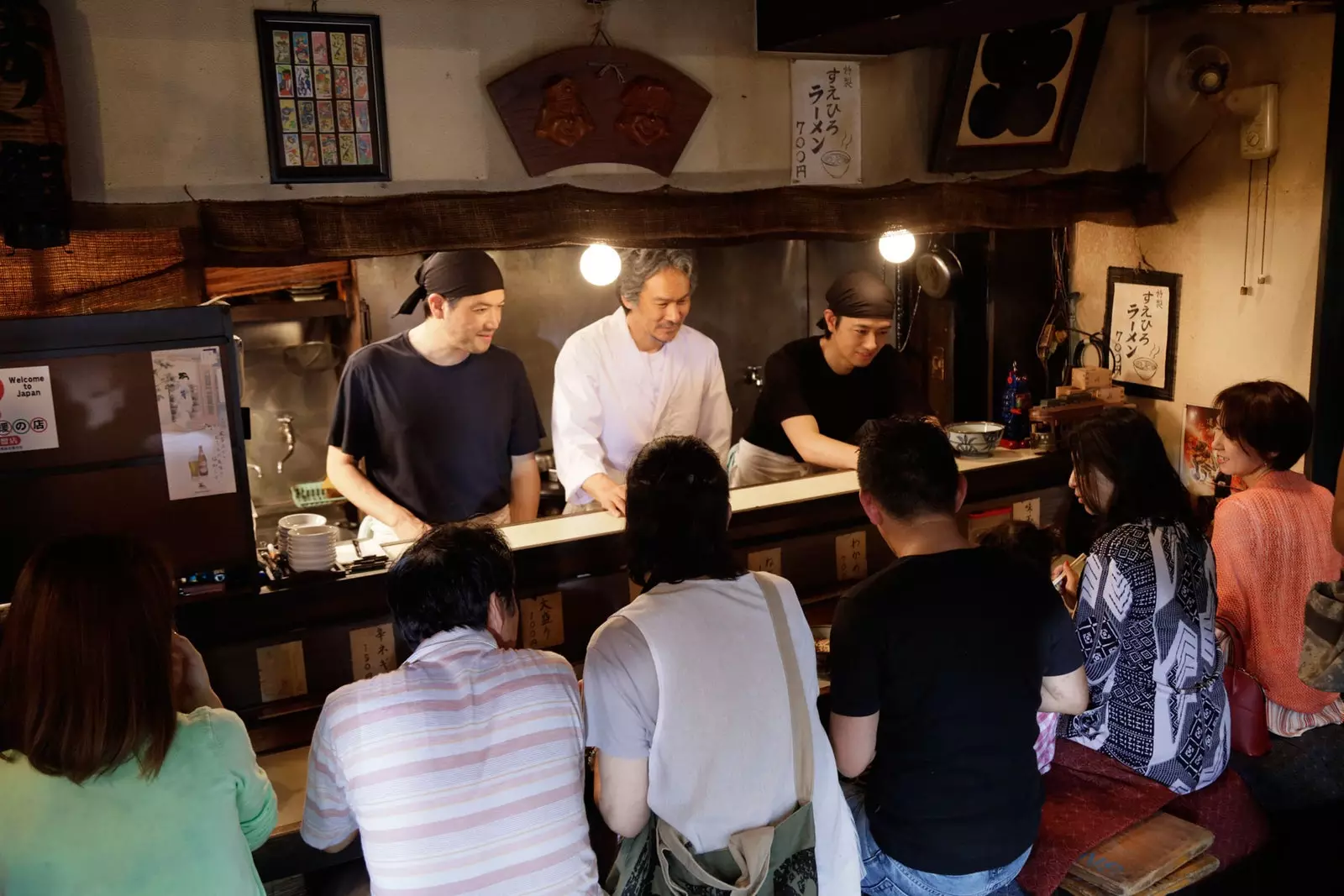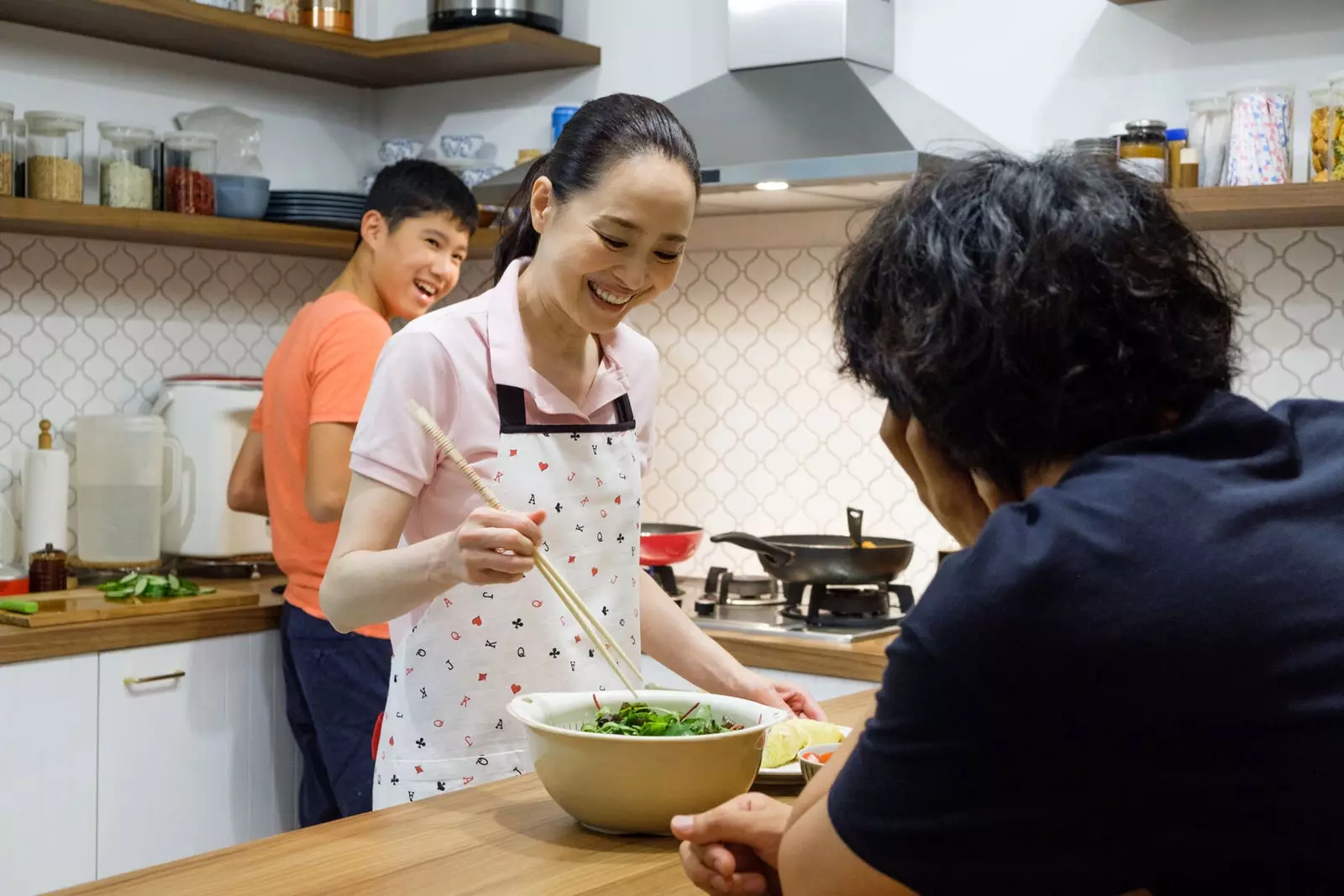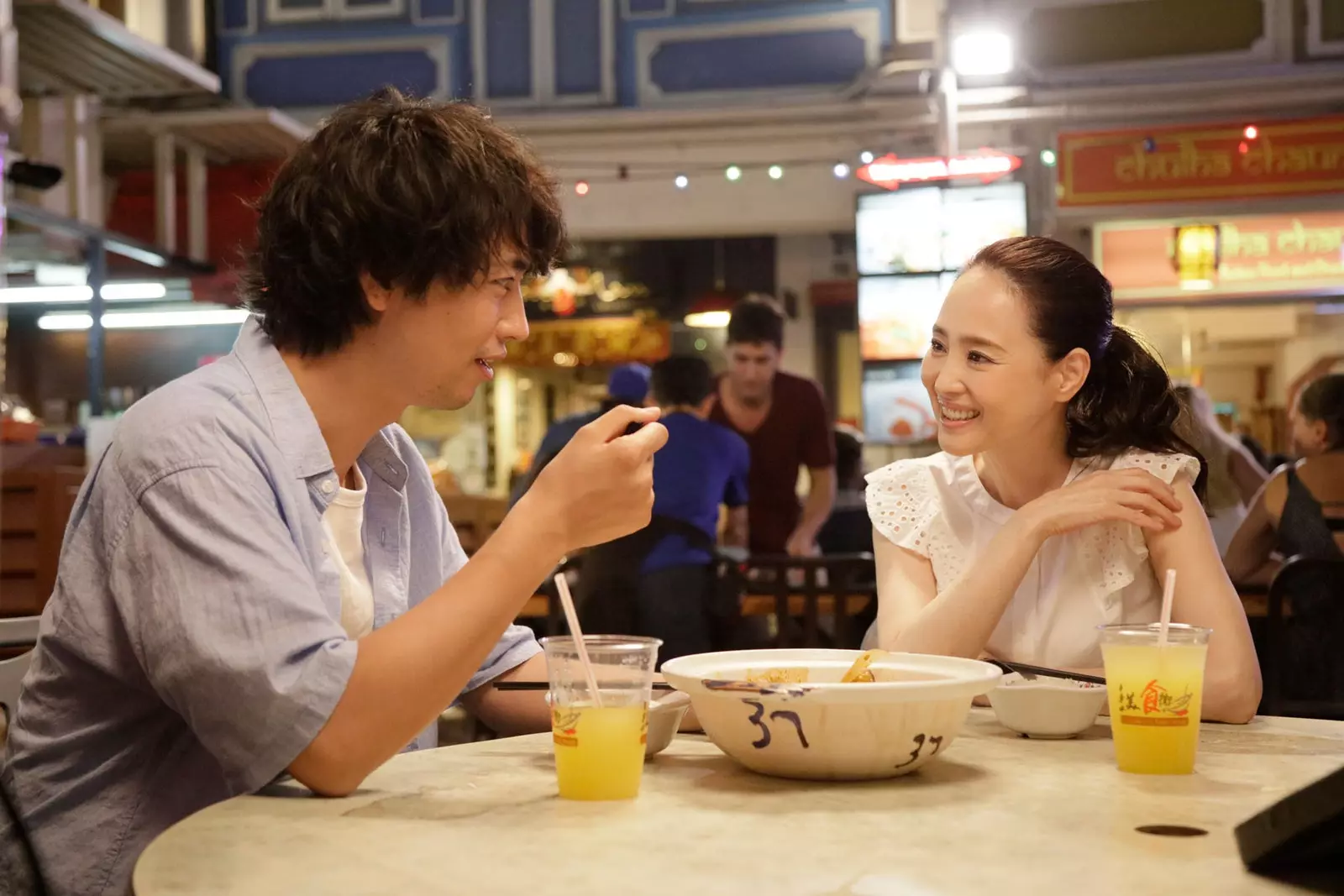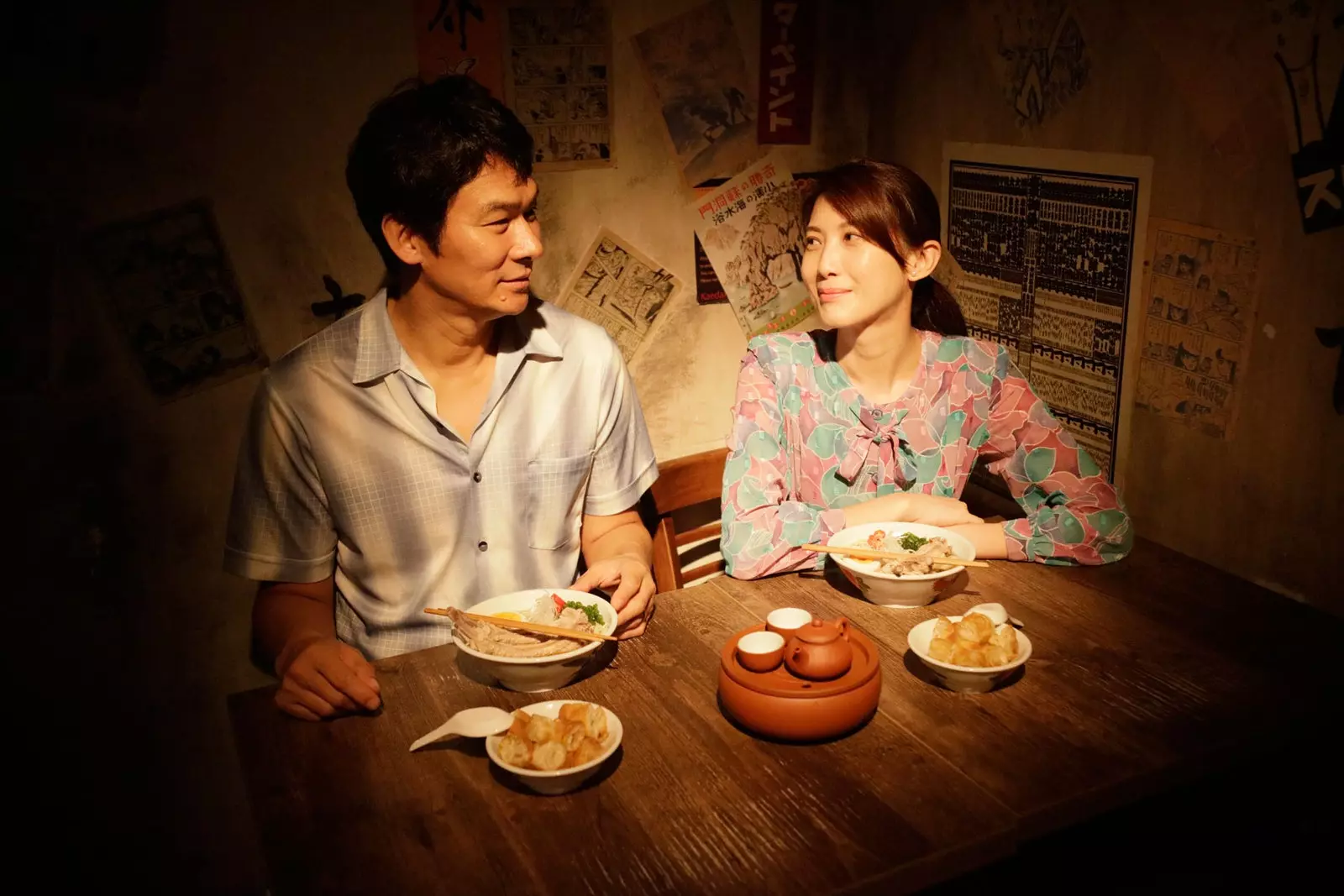
I wish a ramen shop like this under your house.
"Food is, after language, the most important representation of our cultural identity." Something like this was written by the gastronomic historian Ben Rogers and to Singaporean film director Eric Khoo it is a vital maxim that he is now applying in his work. After the movie Wanton Mee in which he toured the best street food stalls in his island country, he runs _A Family Recipe (Ramen Shop) _ (in theaters now) , a trip from Japan to Singapore to celebrate the 50th anniversary of diplomatic relations between the two nations.
“It occurred to me that food was the perfect excuse, because both countries are passionate about food,” he says. But he did not want to talk about all the gastronomy of the two powers of good eating, so he found in two of his most beloved and well-known recipes the excuse for a history of union and historical memory: japanese ramen Y the Singaporean bak kut teh. Hence the original title of the film is Ramen Teh.

Trace your roots through food.
"Personally I have a deep love for bak kut teh since my childhood, since I was little I ate it with my family once or twice a week," he explained at the world premiere of the film at the Berlin Film Festival. “And I'm also a big fan of ramen and shoyu ramen is my favorite. Of course I like sushi and other Japanese food, but ramen is the cheap street food in Japan, just like bak kut teh in Singapore that started out as a blue collar dish: Since they were very poor, they couldn't afford to eat pork, so they boiled the bones with a lot of garlic and medicinal herbs.”
Khoo knows that ramen is more modern than bak kut teh, but both dishes have the same humble origins and have had the same evolution: “Now they are much more sophisticated and they have fans all over the world”, he says he. “Besides, the Japanese love the bak kut teh, and its broth is very similar to that of shoyu ramen (made from soybeans), it is a clearer broth, only with a lot of garlic and pepper”.
The resemblance between the two dishes allowed him to combine them and the link between them in the film is Masato, a cook with a Japanese father and a Singaporean mother, both cooks too, with whom he grew up between the two cultures. When they die, he decides to honor them and travels to Singapore to trace the flavors that his mother taught him and create a recipe that unites both dishes (a recipe, in fact, created explicitly for the film). That memory and exercise of the sixth sense, that of stories, that of recollection, probably one of the most important when standing in front of the stove or a plate.

The film is a perfect gastro tour of Singapore.
Accompanied by a food blogger, Miki (played by Japanese 80s star Seiko Matsuda), Masato walks some of the best street food stalls and restaurants in Singapore, the excuse the director uses to take us to some of his favorite places. "Although Singapore is a small island, we have a great passion for food, almost like the French," he explains. "And I would say that its gastronomic richness comes because when we became independent in 1965, Singapore is built with immigrants from different countries, it has a nice mix of races: Chinese, Malaysian, Indian... It's a hot pot of spices, the spicy foods from Malaysians and Indians have been mixed with Chinese cuisine, for example”.
As an example, in A Family Recipe he teaches the chili crab, the Chinese chicken rice, the Indian fish head curry… dishes created by other cultures in Singapore and “that you only find there”. In the film, in delicious close-up detail, he explains their origins and even how you'll know if they're really hot.

United and in love over a bowl of ramen.
For Khoo, this film is not only a tribute to the two countries, their cuisines and the union over a plate of food, whether between cultures or as a family (“My mother died a long time ago, but I still remember the dishes she prepared for me ", He says) ; is also, in a way, a tribute to Singapore street food, the origin that today his country is a gastronomic mecca.
“When I was little I don't think there were more than two Japanese restaurants, now there are 1,200; the same with the Italians, fast food…”, explains the director. “The problem now is that the new generations do not respect the street food that we grew up with as much. and I am worried because he may die. It's a tough business: standing there for long hours, doing the same thing over and over again. The children of these street food chefs are now engineers or have other professions because they don't want to do what their parents did, we see that other cultures are taking over every time, that they stop cooking our recipes or do them their own way and I think that what is going to happen in the next 20 years is that the taste of Singaporean cuisine will be very different”.
